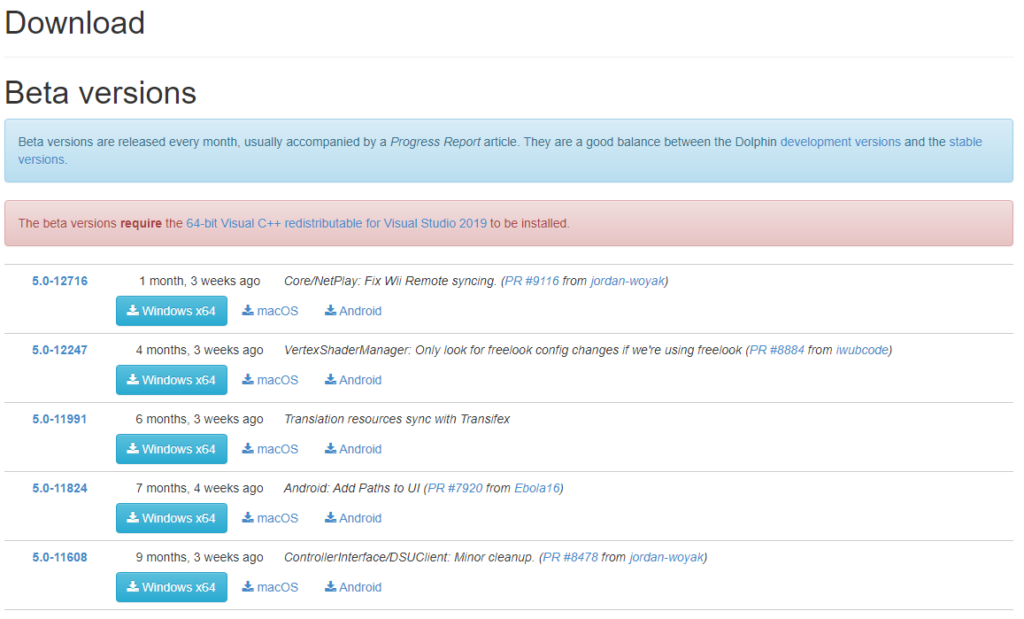

It was implemented very shortly after Dolphin 4.0's release, and removed shortly before Dolphin 5.0's because no one among the staff could get it to work. Here's a fun-fact: Wiimote Netplay has never been in any of Dolphin's releases. 5.0-222, 5.0-290 - Restore and Repair Wiimote Netplay by mimimi and JMC47 ¶ This completely solves the issue of Action Replay and Gecko codes from one game leaking into another.ĥ.0-133, 5.0-136. Now instead of clearing Dolphin's PatchEngine upon booting a game, it is cleared when shutting down a game. This oversight occurred because there are so many different GameCube/Wii filetypes that can be loaded in Dolphin with their own specific needs.
#Dolphin emulator netplay game not found Patch#
They use GeckoOS in order to patch in complicated cheatcodes to turn Brawl into Project M, but under Dolphin's method of applying cheatcodes, if they had already played Melee beforehand, Melee's cheats would get stacked in on top, usually causing invalid reads and a crash. Namely, homebrew which actually posed a significant problem for smashladder players. The problem is that there are specific cases where we can miss that trigger. Melee, with the Netplay Gecko Codes, then go to play Super Smash Bros. So, let's say you're playing Super Smash Bros. In Dolphin, cheatcodes from the previous game session would normally be cleared when you boot up the next game. Dolphin now splits audio on samplerate changes, allowing for much easier synchronization between video and audio files.Īs an added bonus, Fog also added a configurable dump-path in 5.0-112 so that users can use a secondary hard-drive for all of their dumping needs.ĥ.0-122 - Clear PatchEngine on Shutdown by JosJuice ¶ Some games change the audio samplerate a lot, and it would cause issues with syncing audio to video. While it's not the most elegant of solutions, it works as planned and prevents videos from being corrupted.Īs for audio issues the same thing applies - Dolphin now emulates sample rate changes properly instead of having it hardcoded. In order to obviate these issues, Fog came up with the idea of splitting the video on resolution changes. This also would cause video output to be corrupted! Between the main menu and character select, the aspect ratio very slightly changes, and now that Dolphin more accurately emulates a game's aspect ratio, it matches this change. This meant games that started in 4:3, like F-Zero GX, and then checked before the main menu for widescreen on the save couldn't be recorded with the default settings.Īnother case is those games that subtly change their aspect ratio throughout play, such as Super Smash Bros. One key example is with Dolphin's GameCube Widescreen Detection because this involves a change in output, it could now corrupt videos.

But, upon Dolphin has gotten a more accurate over the years and can even emulate resolution changes employed by the games, subtle or not. Now, this behavior used to only affect users who were changing graphics settings while dumping output, so there was no real need to change the behavior. One of the rules of video dumping in Dolphin is that if the resolution of the output changes, the video will be corrupted. But, as Dolphin gets more accurate, a wrench always seems to get thrown into previously written code. While users still have to manually combine audio and video, for the most part, things just work for a majority of games. The only reason we even found Dirt 2 is because it was used to be broken by using GQR reserved bits.ĥ.0-97, 5.0-99 - Split Video/Audio File Dumps on Changes That Would Previously Corrupt or Desync Output File by Fog ¶ĭolphin's audio and video dumping capabilities have improved a lot since Dolphin 4.0. We tried and tried, but we just couldn't find a better example of non-zero GQR performance. Hopefully the next backend on the docket is more to the tune of what people expect! General users shouldn't really shouldn't be using it, except for narrowing down performance issues. The Null Video backend is mostly for testers and developers who are tackling very specific issues. The other backends don't even come close! The cost of this performance is. Make no mistake: the Null Video Backend is the fastest video backend in Dolphin by far.

While many were expecting Dolphin's next video backend to be Vulkan-based, degasus had something else up his sleeve - the Null Video Backend. While none of the heavy hitters have gotten in just yet, June and July had more than their fair share of merges, regressions, and reverts that make up the typical Dolphin workflow. Now that the festivities surrounding the Dolphin 5.0 (and more importantly the feature freeze) are complete, changes have begun to roll into Dolphin once again.


 0 kommentar(er)
0 kommentar(er)
